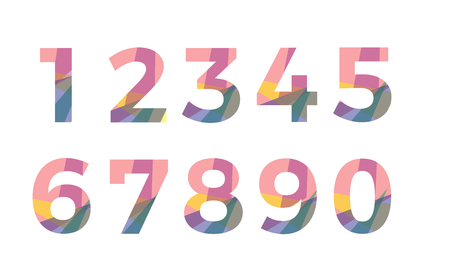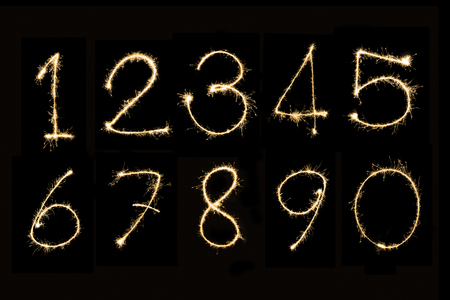Defining Cusp Signs: A Shared Curiosity
In the world of astrology, few topics inspire as much spirited debate and wonder as cusp signs. Whether you’re nestled in a bustling London café or sipping coffee in a New York diner, the idea of being born on the threshold between two zodiac signs evokes a sense of mystery and possibility. British and American astrologers alike recognise that individuals born at this celestial crossroads—typically within a day or two as the Sun shifts from one sign to another—often embody qualities of both neighbouring signs. Yet, while both traditions acknowledge this liminal space, their approaches diverge in intriguing ways. For many across the UK, cusps are seen as a curious invitation to explore the nuances of personality, blending classic British reserve with an openness to cosmic interpretation. In contrast, American astrologers may take a more definitive stance, often drawing firmer lines in the astrological sand. This shared curiosity about cusp signs serves as a bridge across cultures and continents, inviting us all to peer just beyond the boundary lines and discover what lies in the spaces between.
2. The British Take: Heritage, Humour, and Individuality
When it comes to interpreting cusp signs, British horoscopes offer a delightful twist that is unmistakably shaped by the Isles’ own cultural tapestry. Unlike the more assertive and sometimes dramatic American approach, British astrologers weave in subtlety, dry humour, and a deep reverence for heritage. These elements blend seamlessly into their readings of those born on the threshold between two signs, lending cusp interpretations a flavour as distinctive as Yorkshire tea or a brisk walk along the Cornish coast.
Heritage: Rooted in History
British astrology’s roots are deeply entwined with centuries-old traditions and folklore. The ancient Celts, Druids, and later Victorian mystics have all left echoes that shape how cusp signs are understood today. Instead of viewing cusp-born individuals as conflicted or “caught between worlds,” there is an emphasis on continuity—seeing these souls as bridges between histories, carrying the wisdom of both signs with an unspoken grace.
Local Wit: Understated Humour at Play
British horoscopes rarely take themselves too seriously. There’s always room for self-deprecating wit and a wry acknowledgment of life’s ambiguities—especially for cuspers! It’s not uncommon to find horoscopes gently poking fun at the indecisiveness of a Libra-Scorpio cusp or celebrating the “cheeky” adaptability of a Gemini-Cancer blend. This subtle humour allows readers to embrace their duality without feeling burdened by it.
Individuality: A Uniquely UK Sense of Self
The British approach honours individuality above all else. In contrast to American horoscopes that might encourage bold self-assertion, British astrologers invite you to quietly explore your inner landscape. Cusp-born Brits are seen not as anomalies but as nuanced mosaics—each person’s astrological identity is respected for its complexity and uniqueness.
Cultural Comparison Table: British vs. American Cusp Interpretations
| Aspect | British Interpretation | American Interpretation |
|---|---|---|
| Humour | Dry, understated, gently teasing | Direct, playful, sometimes theatrical |
| Tradition | Rooted in folklore & history | Modern, innovative, pop-culture influenced |
| Soul Identity | Nuanced mosaic, celebrates ambiguity | Seeks clarity and assertive definition |
| Narrative Tone | Sophisticated & reflective | Inspirational & motivational |
The result? For those exploring their cusp identity under British skies, expect guidance infused with gentle wisdom, clever observations, and an invitation to savour your own peculiar magic—quietly confident and distinctly UK.

3. American Perspectives: Bold, Personal, and Expansive
Across the Atlantic, the American approach to cusp signs glows with a certain bravado—one that is unmistakably bold and deeply personal. In contrast to the British penchant for subtlety and historical context, American astrologers often paint their horoscopes in vibrant colours, highlighting the cusp as a place of power rather than ambiguity. Here, the archetypes take centre stage: the fiery ambition of Aries-Taurus cusps or the dreamy intellect of Pisces-Aries blends are not seen as contradictions but as superpowers waiting to be harnessed.
This expansive attitude towards astrology reflects broader cultural values. In the United States, there’s a prevailing belief that personal development is a heroic journey—one mapped by challenges and transformation. Cusp individuals are celebrated for their potential to transcend boundaries; they are encouraged to “lean in” to their dual energies and craft unique identities that defy easy categorisation. The narrative is less about navigating social expectations and more about self-actualisation. You’ll often find American horoscope columns offering motivational language, inviting readers to explore their inner landscapes and embrace the full spectrum of their chart with confidence.
Astrologically speaking, this means that rather than downplaying the tension or complexity of cusp energies, American traditions urge seekers to integrate both sides with gusto. Workshops, podcasts, and books abound on how to maximise one’s “cusp powers,” positioning these individuals as pioneers on the frontier of self-discovery. The lens is generous and future-oriented; being born on a cusp isn’t just a quirk of timing—it’s an invitation to adventure.
4. Language and Local Flavour: How Terms Tell the Tale
Astrology is more than just the stars—its the stories we tell ourselves, and nowhere is this truer than in the distinctive language that colours British horoscopes. When it comes to cusp signs, the British approach is subtle, often wrapped in nuanced idioms, gentle wit, and a dash of understatement that contrasts sharply with American astro-commentary. In Britain, a cusp-born Gemini-Cancer might be described as “caught between afternoon tea and the midnight oil”—a poetic way of conveying duality—while across the Atlantic, you’re more likely to hear about being “torn between two worlds.” The British tendency to underplay drama brings an air of quiet wisdom; terms like “on the fence,” “a foot in both camps,” or even “straddling the line” appear frequently in horoscopes, lending a sense of gentle curiosity rather than existential crisis.
British Phrase |
American Equivalent |
Subtle Energetic Difference |
|---|---|---|
| On the cusp of something splendid | About to break through | British optimism is quietly hopeful; American phrasing is bold and assertive. |
| A bit of this and a bit of that | Having it both ways | The British phrase suggests gentle flexibility; the American is more direct and decisive. |
| Keenly aware of shifting tides | Navigating change head-on | British language invokes natural cycles; American style focuses on action and control. |
| Neither here nor there (but everywhere at once) | Lives on the edge | The former hints at mystical ambiguity; the latter implies risk and adventure. |
Beyond simple vocabulary, British astro-commentary often bathes cusp readings in a kind of lyrical ambiguity—inviting seekers to “lean into liminality” or “embrace the betwixt and between.” This stands in contrast to American readings, which tend to frame cusps as challenges to be conquered or dualities to be harmonised. In Britain, there’s a spiritual delight taken in occupying the in-between spaces: it’s not about fixing but about savouring. The very energy feels different—less urgent, more accepting, as if astrology were another cup of tea shared at twilight rather than a trumpet call for transformation. Thus, every word chosen by a British astrologer casts a gentle spell, inviting reflection over reaction, stillness over striving—a uniquely local flavour that makes their interpretation of cusps quietly enchanting.
5. Everyday Impact: Relatability in Love, Work, and Life
Step into any bustling British pub on a Friday night, and you’ll likely overhear a light-hearted debate about star signs—often with a wink and a pint in hand. The British approach to cusp signs isn’t just reserved for astrologers’ columns; it weaves itself through daily life in ways that are both subtle and profound. Where American interpretations may highlight the drama or intensity of being “between signs,” the British style tends to embrace the gentle ambiguity, often using wit to make cusp-born individuals feel understood rather than othered.
Love Lives Under the Cusp
When it comes to matters of the heart, British horoscopes often frame cuspers as complex yet charming—perhaps more so than their single-sign peers. A Gemini-Cancer might be teased for being both flirtatious at a garden party and deeply sentimental when sharing tea by the fire. In contrast to American horoscopes, which might urge such individuals to “choose a side,” British astrology celebrates this duality, encouraging openness in romantic connections. It’s not uncommon for advice columns in UK magazines to suggest that embracing one’s cusp nature can lead to more honest and layered relationships.
Workplace Wisdom with a British Twist
In offices from Manchester to London, star sign banter is a popular icebreaker. British horoscopes often interpret cuspers as adaptable team players—someone who can see both sides of an argument, or switch hats when needed during meetings. For example, an Aries-Taurus might be praised for blending drive with practicality. This stands in contrast to some American readings, which may stress internal conflict or indecision. In the UK, being born on the cusp is more likely seen as an asset—a quietly celebrated quirk that adds colour to workplace culture.
Celebrity Horoscopes and Public Perception
British media loves its celebrities, and their horoscopes are no exception. When stars like Adele (a cusp-born Taurus-Gemini) appear in tabloids or chat shows, astrologers delight in discussing how her blend of earthy determination and sparkling wit reflect classic cusp qualities. Rather than boxing her into one sign’s mould—as is sometimes seen in US publications—the British press revels in the nuance. This approach filters down into everyday conversations, shaping how people relate not only to celebrities but also to themselves and their friends.
In essence, the British interpretation of cusp signs offers an accessible language for navigating love, work, and fame—with relatability at its heart. Whether over chips at the local or scrolling through celebrity gossip, these nuanced readings provide comfort and connection, honouring the unique stories that each cusper carries through daily life.
6. Bridging the Pond: Emerging Trends in Cusp Readings
As we sail further into the 21st century, the lines between British and American approaches to cusp signs are beginning to blur, thanks to the far-reaching tides of globalisation and the boundless waves of social media. Once upon a time, seekers in London might have turned to the gentle wisdom of their local astrologer, while star-gazers in New York favoured the bold, individualistic readings characteristic of American horoscopes. Today, however, the digital world brings these traditions together in an unprecedented confluence.
This cross-fertilisation is not merely academic—it’s deeply personal. British astrologers are increasingly open to integrating American ideas about self-expression and personal empowerment into their analyses of cusp personalities. Simultaneously, American enthusiasts are discovering the subtlety and cultural nuance that British interpretations bring to the mystical dance between two signs. Online forums, podcasts, and Instagram feeds become virtual tea rooms where these perspectives mingle freely.
The result? A new generation of cusp readings that transcend geography. In these spaces, a Libra-Scorpio cusp born in Manchester may find resonance with an interpretation crafted in Los Angeles, while still holding close the archetypal storytelling so beloved on British soil. The sharing of personal stories—of feeling both at home and out-of-place on a cusp—echoes across continents, fostering empathy and understanding.
Moreover, this global conversation encourages a more fluid approach to identity and fate. No longer restricted by national borders or traditional norms, modern cusp readings invite individuals to embrace complexity and transformation—a sentiment that feels especially poignant in our rapidly changing world.
So as British and American horoscopic wisdom continue to intertwine, they create not just a richer language for understanding cusp signs, but also a sense of spiritual kinship that stretches from one side of the Atlantic to the other. For those who dwell on the threshold of two signs, this emerging fusion offers both belonging and adventure—a reminder that our stories are always evolving under the same vast sky.


